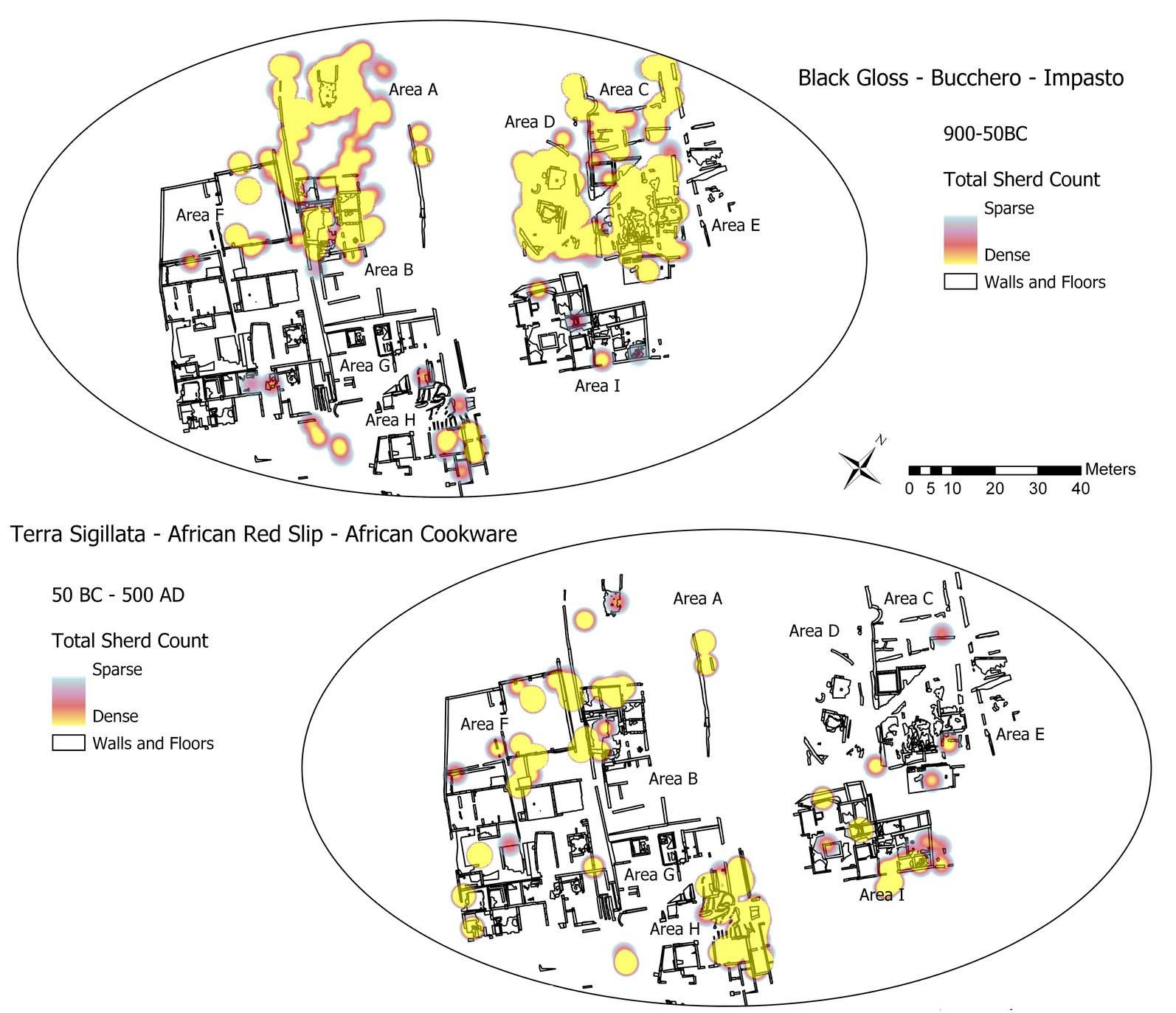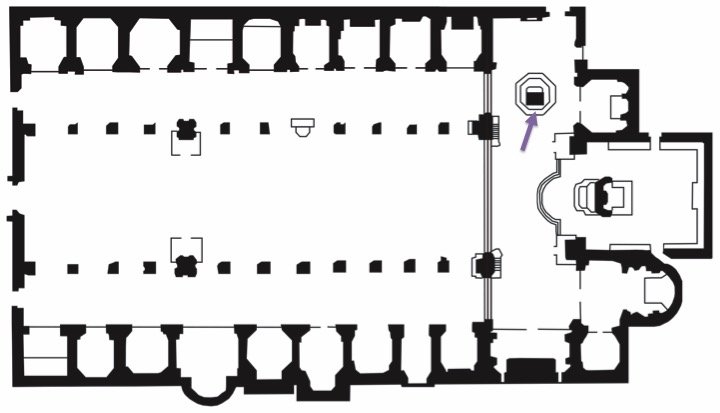Publications
Publications
Here are links to my most recent and relevant publications. The links lead to copies on publishers’ websites, academia.edu, and googlebooks where digital versions are available.
Book - Foodways in Roman Republican Italy (2021)
This book explores the production, preparation, and consumption of food and drink in Republican Italy to illuminate the nature of cultural change during this period. It tracks through time the foodways of three sites in Etruria from about the third century BCE to the first century CE: Populonia, Musarna, and Cetamura del Chianti. The book examines the morphology and use wear of ceramics used for cooking, preparing, and serving food in order to deduce cooking methods and the types of foods being prepared and consumed. Published by the University of Michigan Press.
Book - A Cemetery and Quarry from Imperial Gabii (2021)
Co-edited with Anna Gallone, this a monograph-length digital publication, Volume 2 of the Gabii Reports Series. It focuses on Area A and the late phases of Area B of the Gabii Project Excavations. It features the description and interpretation of all of the phases from the Iron Age through to the 2nd century CE of this sector of the site. It includes specialist reports from over a dozen contributors, interactive maps, and a 3D model built on a Unity 3D game engine. It was released in November 2021 by the University of Michigan Press.
book - Gabii through its Artefacts (2023)
Co-edited with Mattia D’Acri, this book brings together 15 papers written by as many scholars on objects from the excavations of the town of Gabii undertaken by three different international teams since 2007: The Gabii Project, which is a primarily US-based group of scholars; a team from the Musée du Louvre; and a team from the University of Rome “Tor Vergata” collaborating with the Soprintendenza Speciale per i Beni Archeologici di Roma. The contributions aim to consider artefacts outside the ceramic report and small finds catalogue format in terms of both the wide variety of materials and the possibilities for unique individual stories.
The ceizra vessels and makers’ stamps in Hellenistic Italy (2023)
This article adds two newly-discovered examples of the ceizra makers’ stamp on creamware askoi from the sites of Gabii and Populonia to this series of Etruscan stamps from the Hellenistic period. This is the first Etruscan inscription found at Gabii. The study attempts to reconstruct the original vessel form and examines the context of use and reasons for the distribution of this object in Etruria and Latium. Makers’ marks of this period, the precursors to the well-studied terra sigillata stamps of the same region, are also considered as part of the regional style of using seals to demarcate and decorate ceramic vessels.
Internal Red-Slip Wares in the Roman Mediterranean (2023)
Examining several hundred samples of internal red-slip vessels from Musarna, Populonia, Gabii, Pompeii, and Cetamura del Chianti, this project combines the study of morphology, use wear, and ceramic petrography. Considering the aesthetics of glossy red Roman cooking pans engages with the idea of the ceramic "service" and allows us to fruitfully consider the possibilities for multi-functionality in object use, bringing us closer to the ancient consumers' experience in the kitchen and at the table.
Reimagining urban success: rhythms of activity at Gabii, 800 BC–AD 600 (2022)
Co-authored by J.T. Samuels and 10 other contributors, this paper challenges the idea that Gabii underwent a major urban decline. Diachronic evidence documenting activity at the site highlights shifting values and rhythms materialised in the maintenance, transformation and abandonment of different urban components. This complex picture of adaptation and resilience provides a model of ancient urbanism that calls into question outdated narratives of urban success and failure.
A Changing Cityscape in Central Italy: The Gabii Project Excavations, 2012–2018 (2021)
Co-authored by J.T. Samuels and 23 other contributors, this is a status report from the Gabii Project excavations from 2012-2018. Excavations have uncovered an Iron Age (8th–5th centuries BCE) hut complex that has provided evidence for architecture, funerary rites, and quotidian activities during the initial polynuclear settlement at urbanizing Gabii. A unique monumental complex constructed in the 3rd century BCE has been identified. Excavation data has further characterized the reorganizations that took place during the first centuries CE, when Gabii’s settled area contracted.
Santa Maria in Aracoeli (Rome): Frank Brown’s excavation in 1963 (2020)
Co-Authored with A. Martin and M.J. Cuyler, this article presents the evidence of Frank Brown’s excavation carried out in the church of Santa Maria in Aracoeli on the Capitoline Hill in Rome. It was never published and thus has remained little known. Selected ceramic fragments, kept at the American Academy in Rome since 1963, constitute the major element now available. Besides shedding light on Brown’s excavation, the material offers a range of finds that may prove useful as comparanda for other contexts and includes examples of wares and types that are still little known or unattested at Rome.
A MONUMENTAL MID-REPUBLICAN BUILDING COMPLEX AT GABII (2018)
Excavations at Gabii in 2012–15 uncovered a monumental building complex whose original phase dates to the mid-third century BC. This report, co-authored by A.C. Johnston and 7 other contributors, contextualizes this phase and offers a preliminary interpretation of this public building, with spaces designed for a variety of functions: bathing, public feasting, and ritual activity. It now represents one of the very few examples of public buildings other than temples and fortifications known from the mid-Republican period, and sheds important light on the development of Roman architecture and of the Latin cities in a crucial and obscure period.
Measuring use wear on black gloss pottery from Rome through 3D surface analysis (2018)
Co-authored with R. Opitz and M. Mogetta, this project involves the high-resolution 3D laser scanning of a cache of Italian black gloss pottery from the Capitoline Museums in Rome. Our aim is to examine in detail the minute traces of production and use of these vessels and to produce a digital record of their form. We have experimented with several scanning devices in order to determine the optimal methods for capturing abrasions on pottery and are developing digital methods for surface analysis.
Fuel, cuisine, and food preparation in Etruria and Latium: Cooking stands as evidence for change (2015)
This examines ceramic cooking stands in early 1st-millennium BC Italy. It interrogates the notion that changes in diet (a result of contact between Greeks and Italians) caused a change in the morphology of cooking stands. The close examination of technological and resource developments and social changes must have also affected ancient cooking methods.
A tessera lusoria from Gabii and the afterlife of Roman gaming (2015)
This paper explores a single object from an Imperial tomb at Gabii: an ivory tessera lusoria with GVLO inscribed on it. In so doing, it opens a broader appraisal of the potential uses and understandings of small objects with long lives. The discussion also demonstrates the variation and richness afforded by an interpretation of object type and function that includes not just the identification of the object as it was produced, but also allows for the shift in meanings and intention as the object moves through time and space.
Function and use of Roman pottery: a quantitative method for assessing use-wear (2014)
I introduce a method for the empirical study of ceramic use through the application of ‘alteration analysis’ (more commonly known as ‘use-wear analysis’): that is, the recording of accretion and attrition of the surfaces of domestic pottery. I describe a recording method to capture qualitative observations of pottery in a quantitative way. This approach allows for the generation of relatively large datasets that can be subjected to statistical analysis in order to observe real patterns of use.












